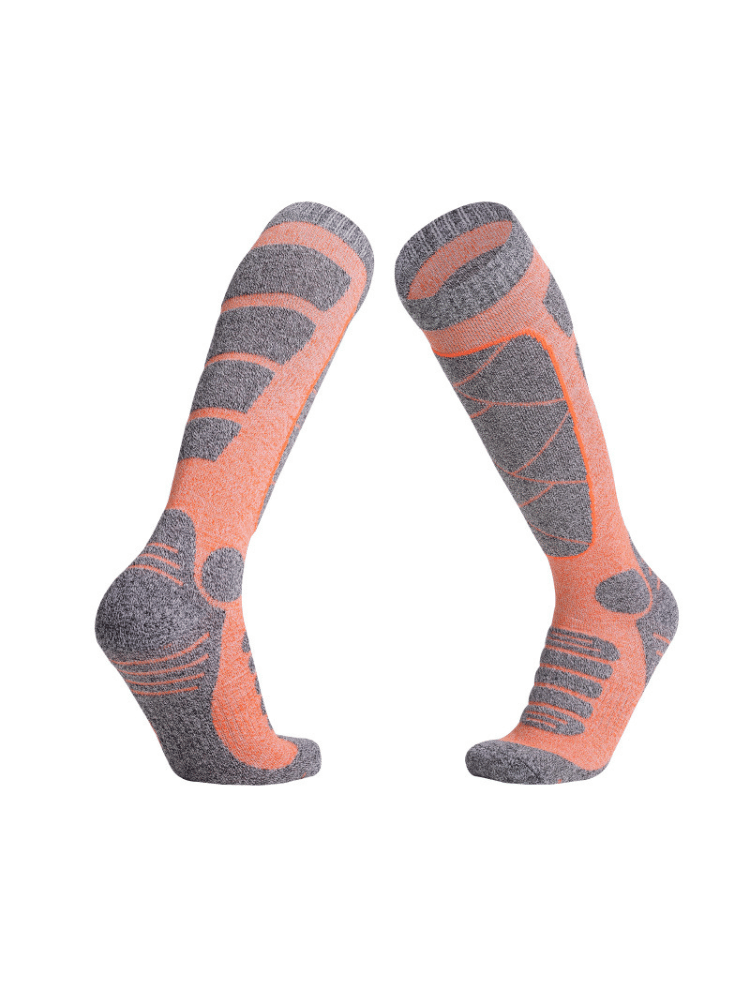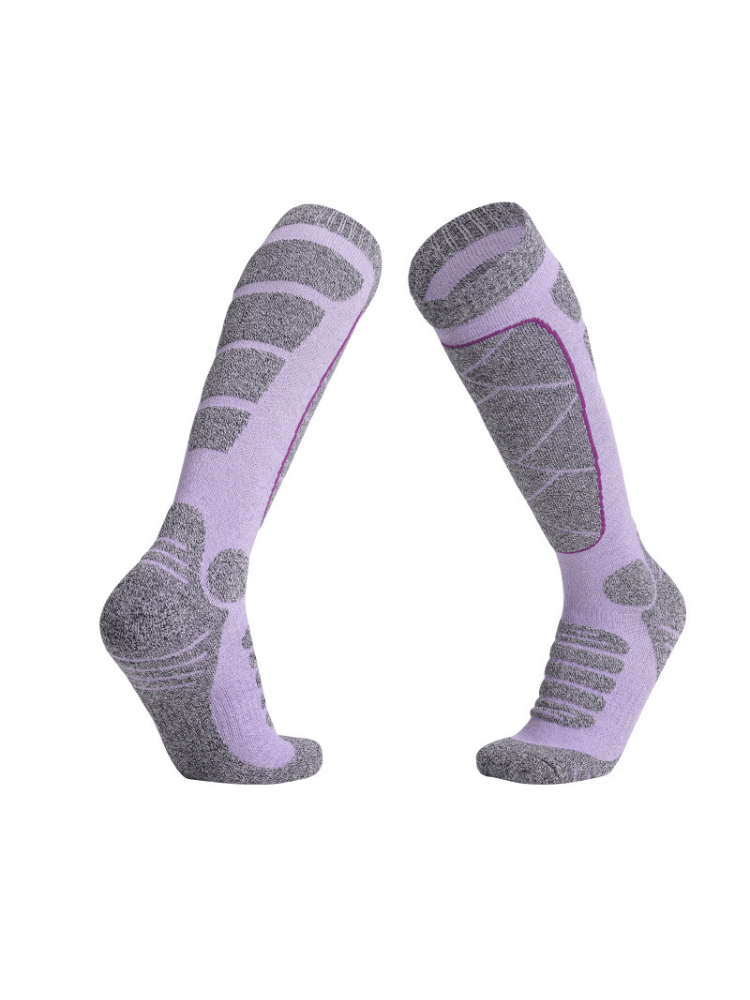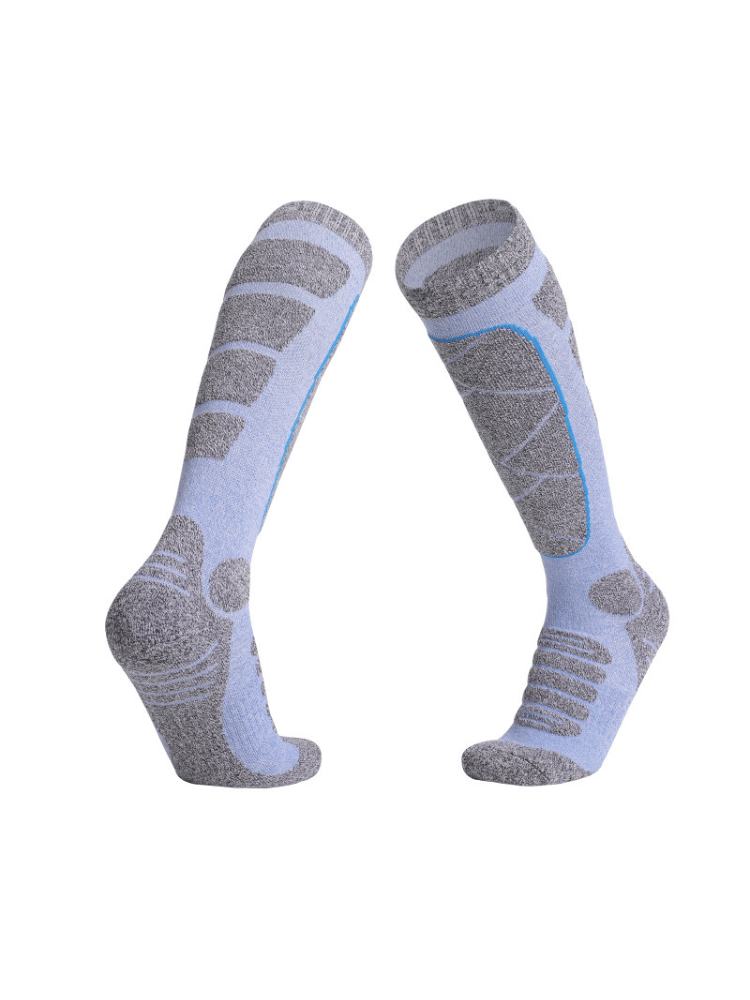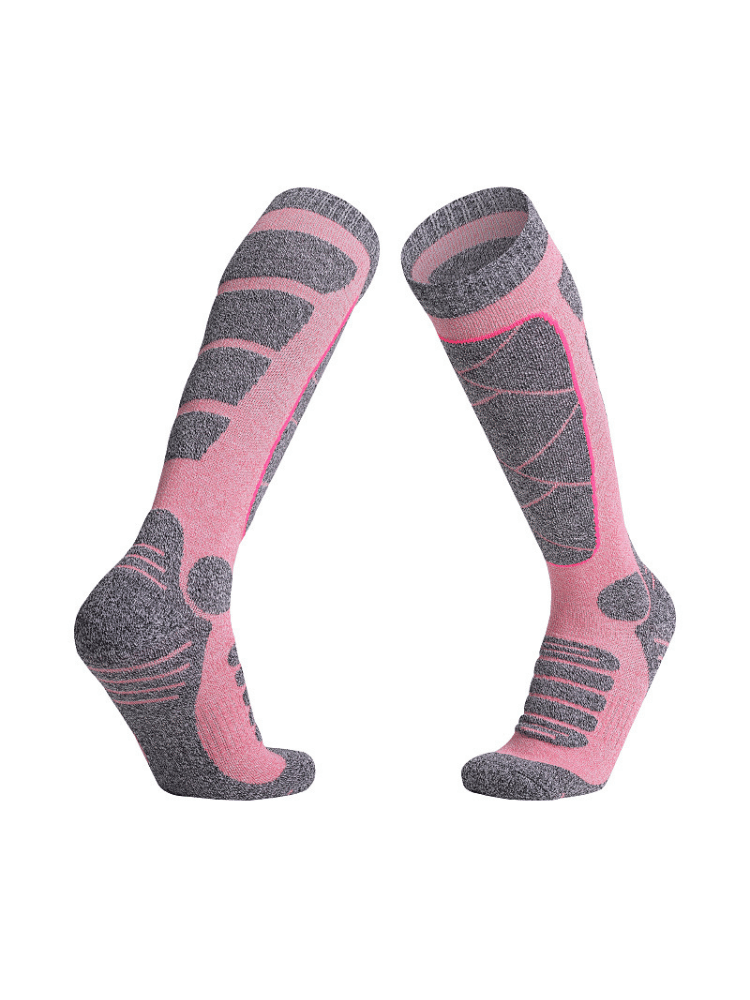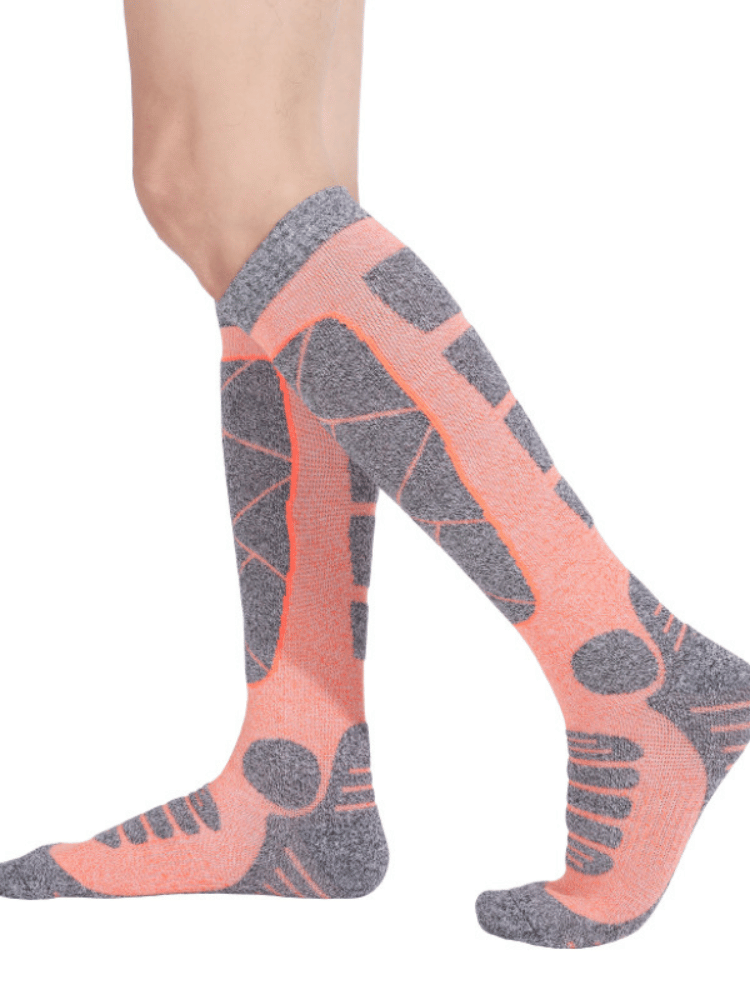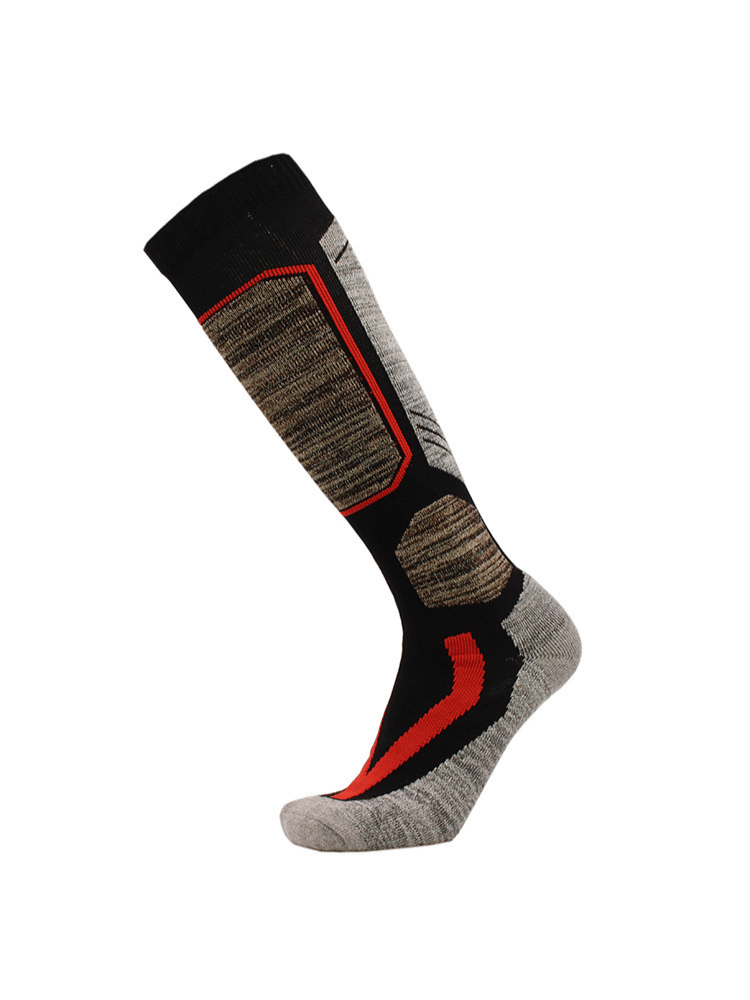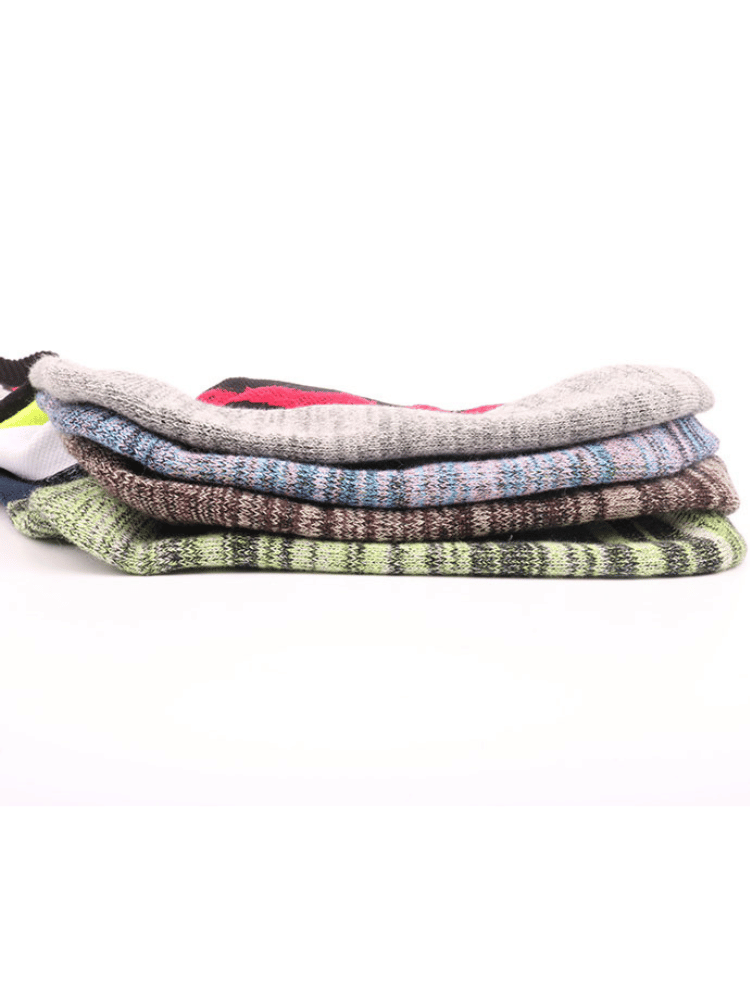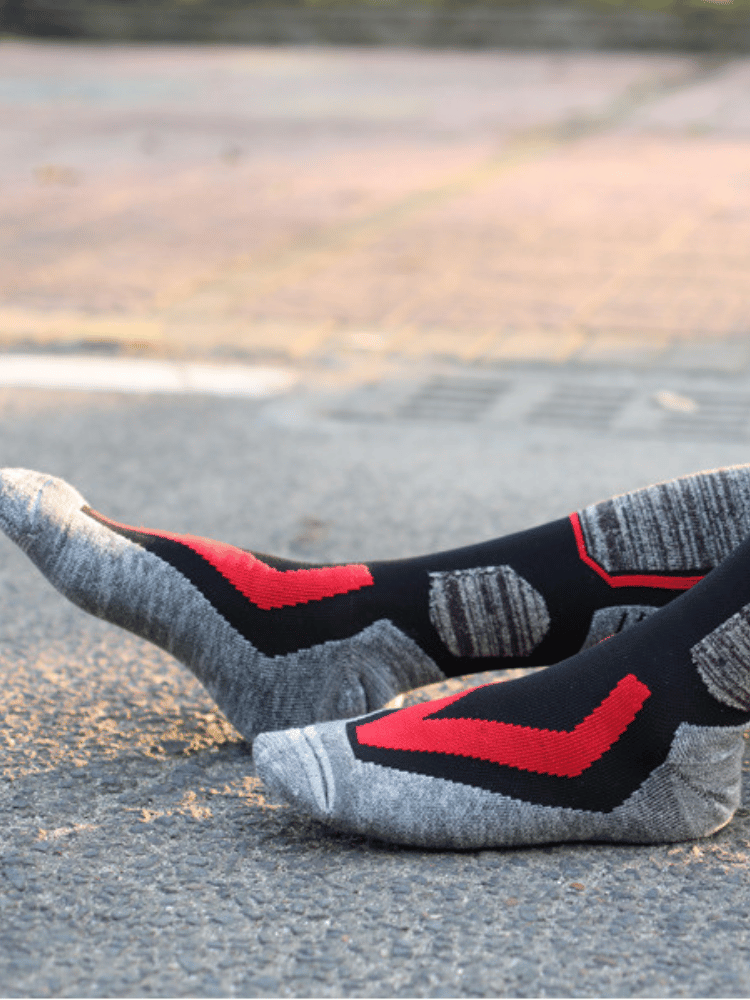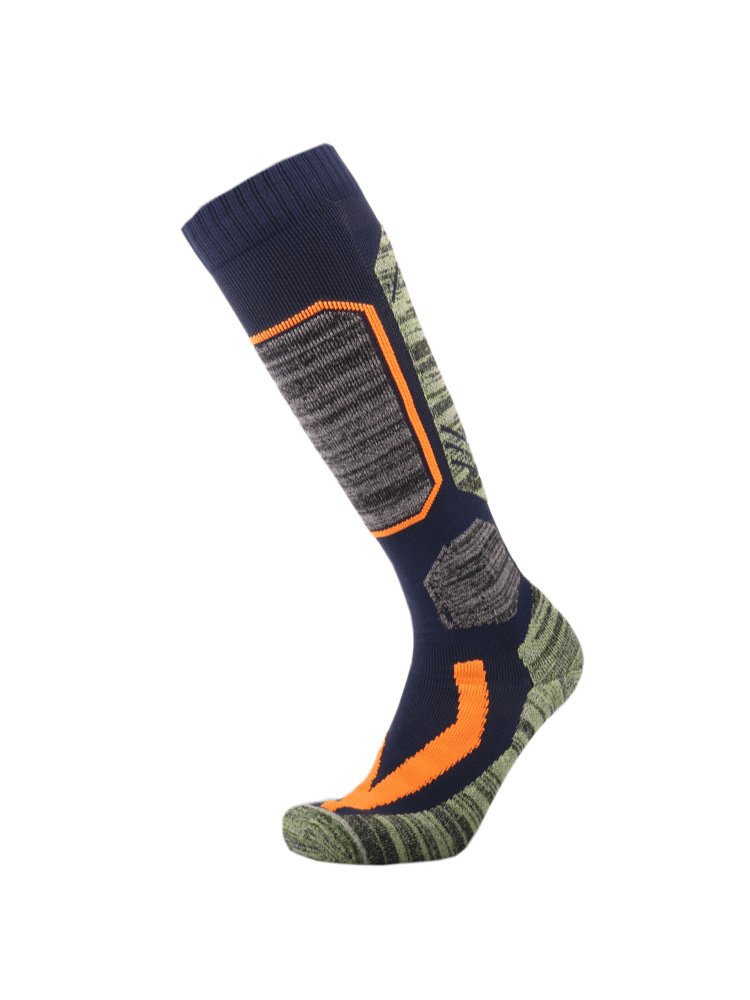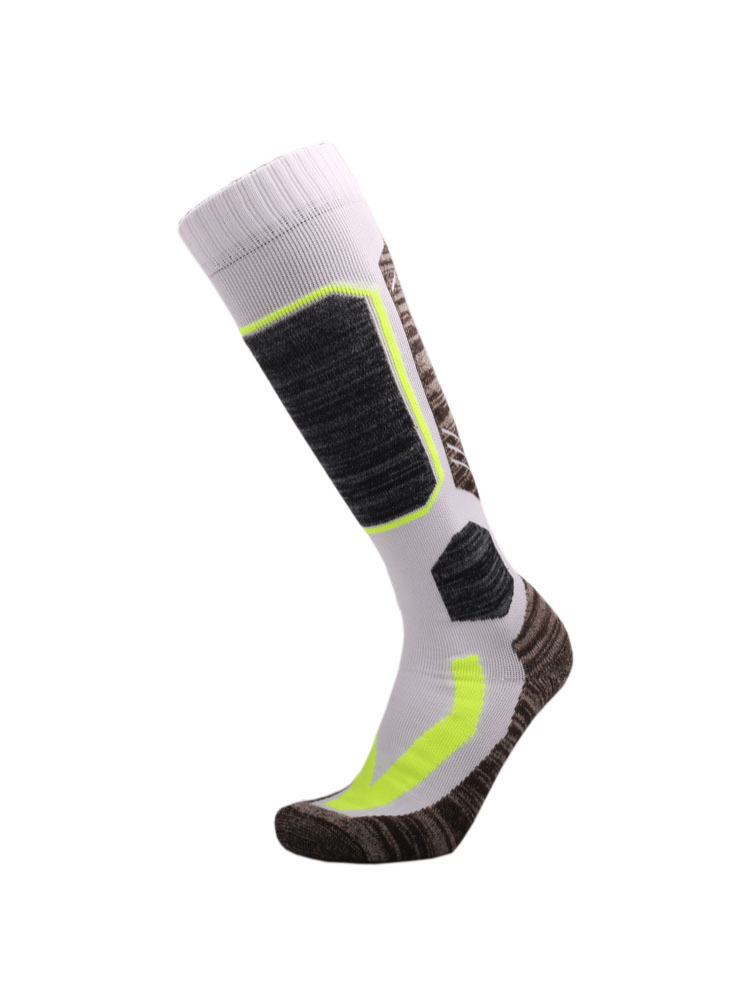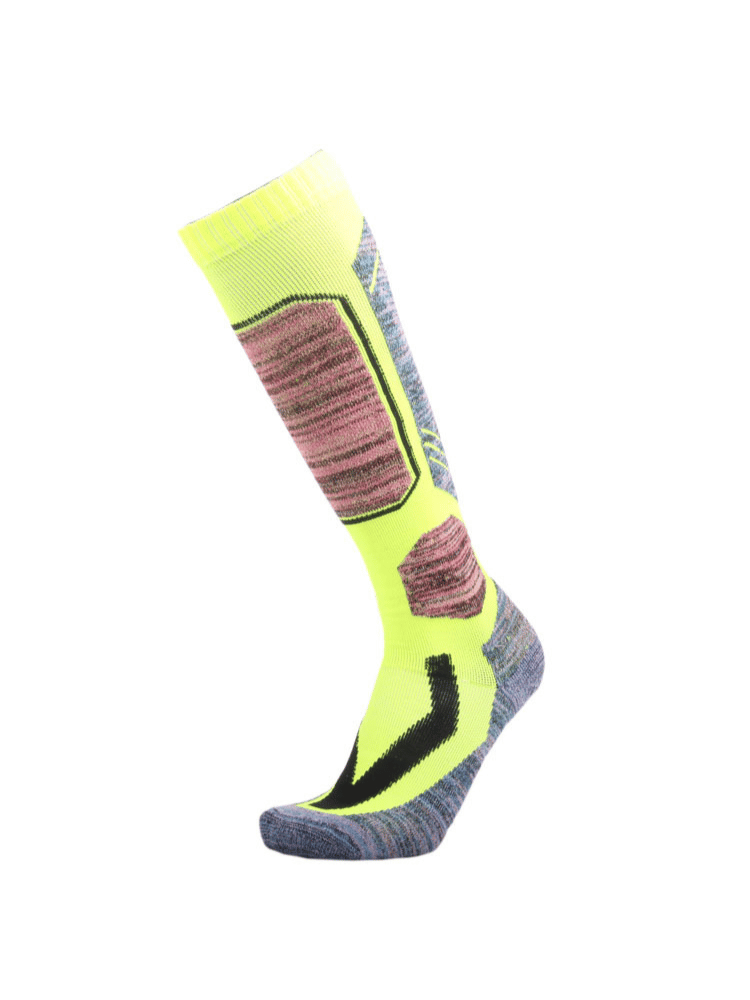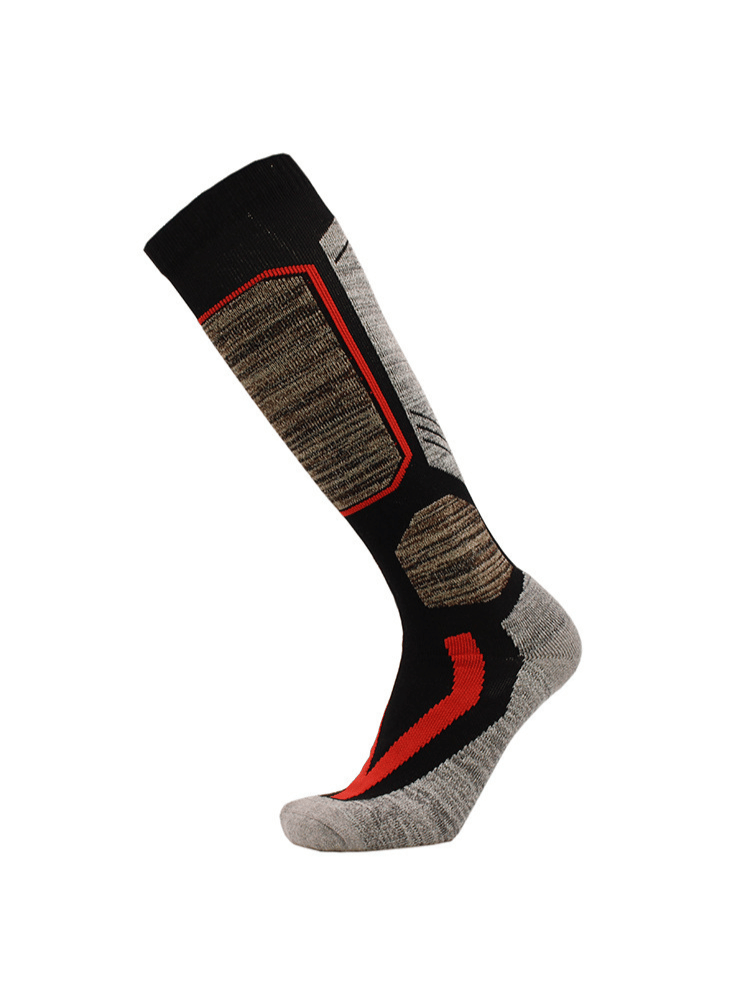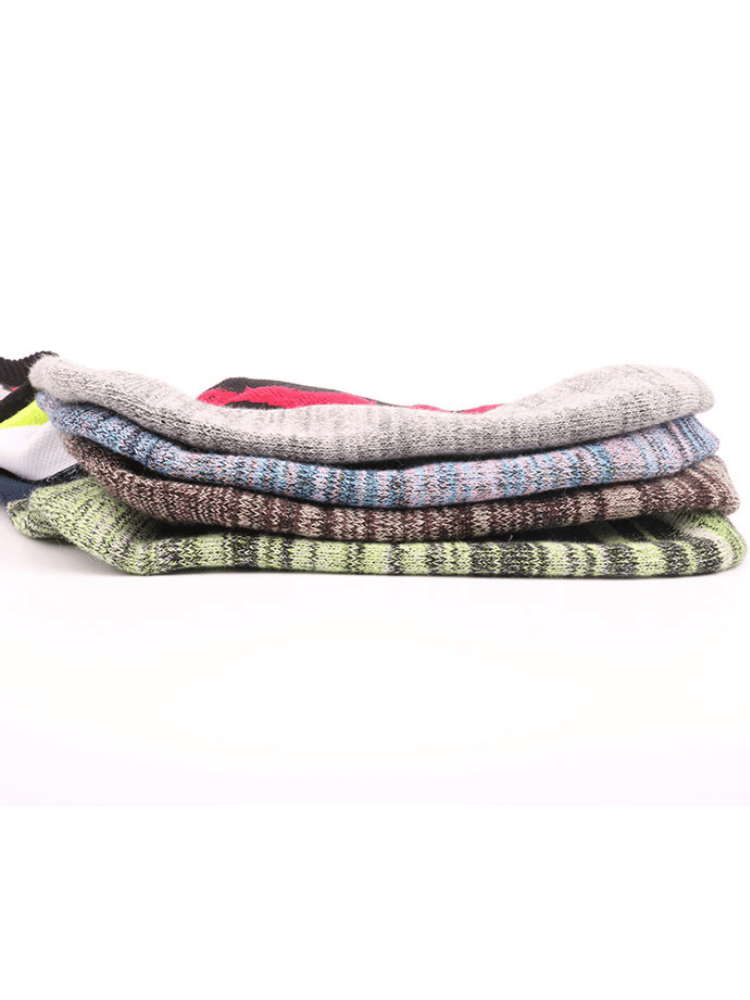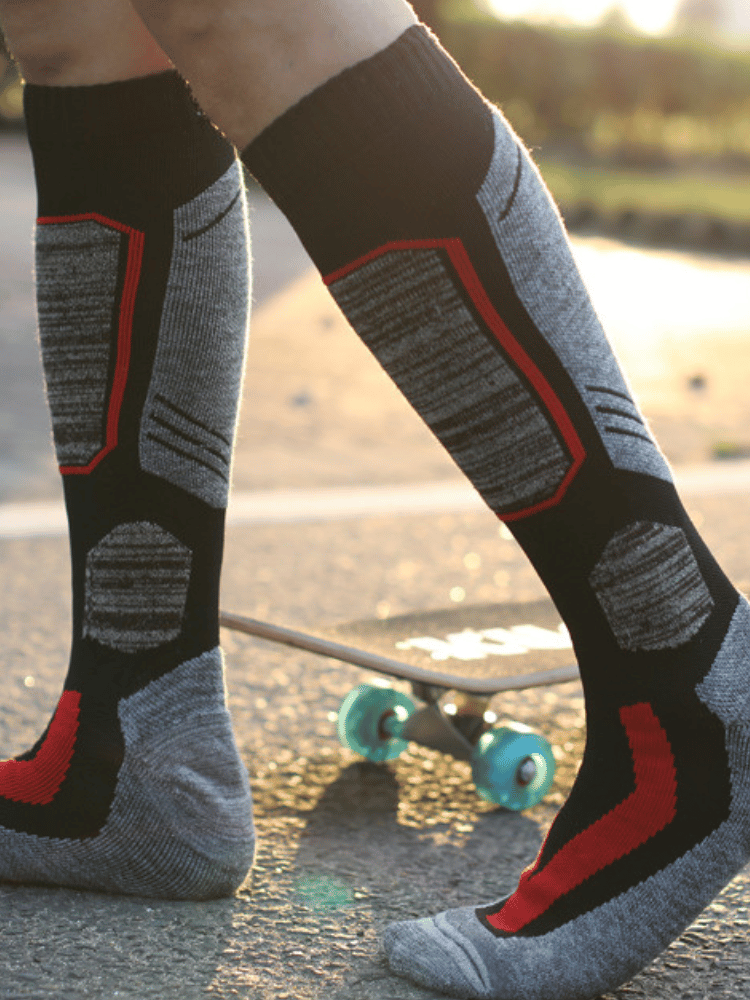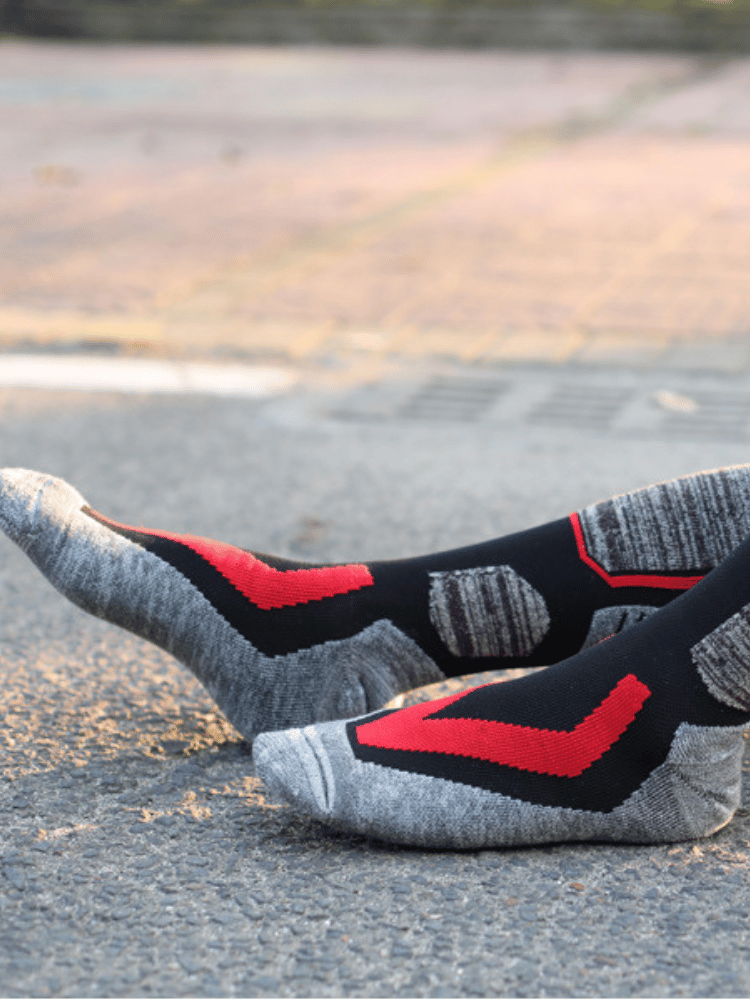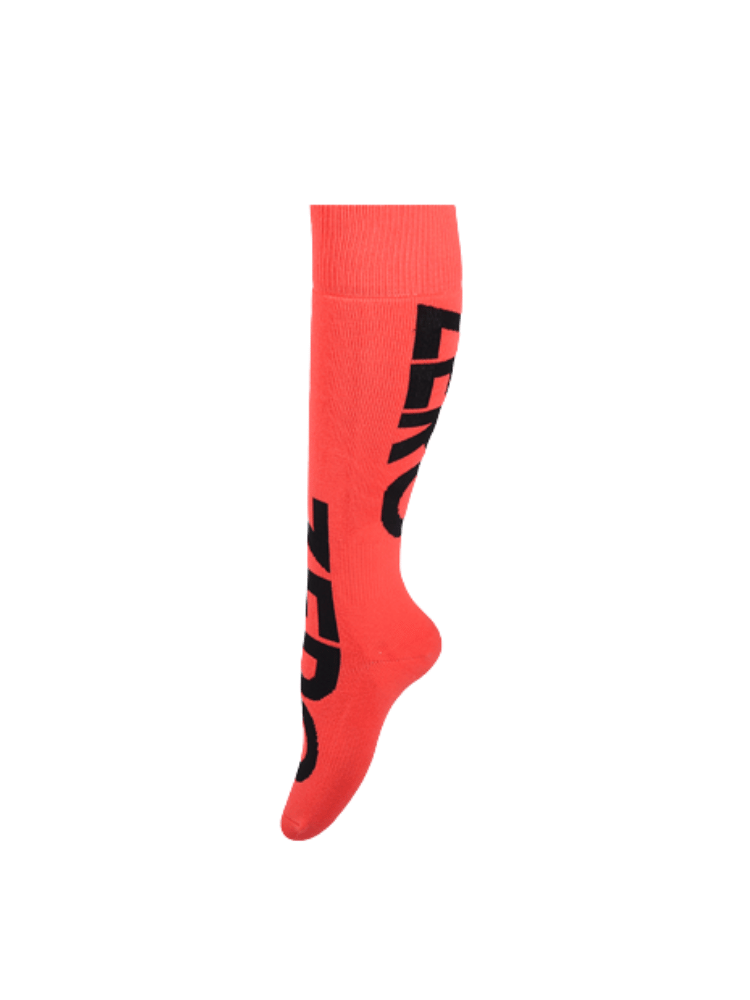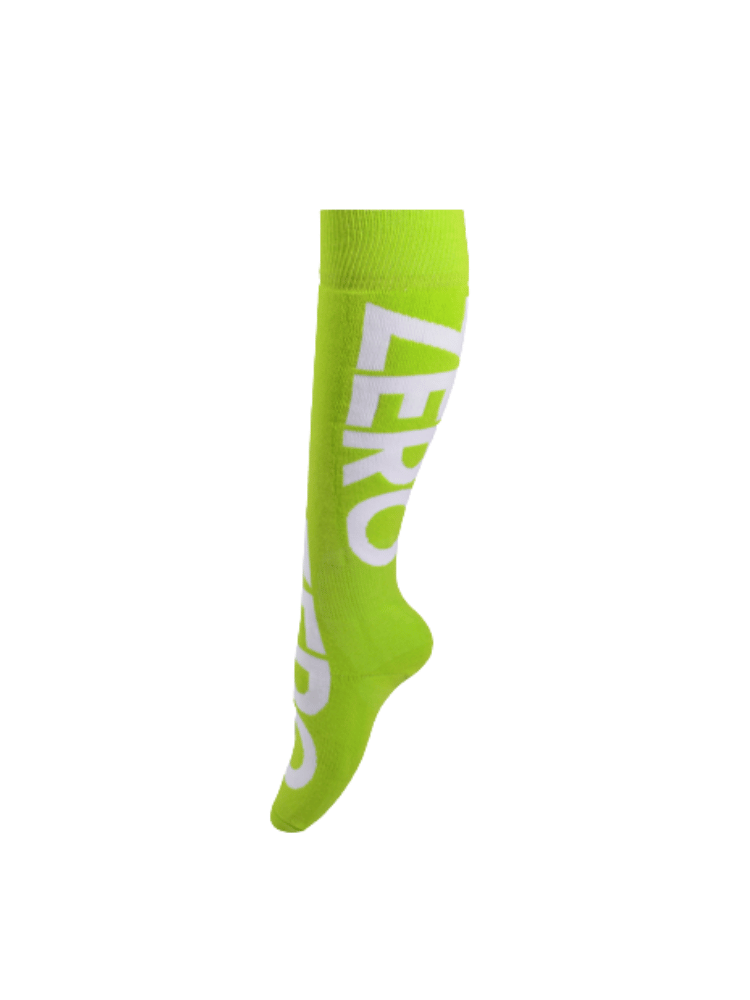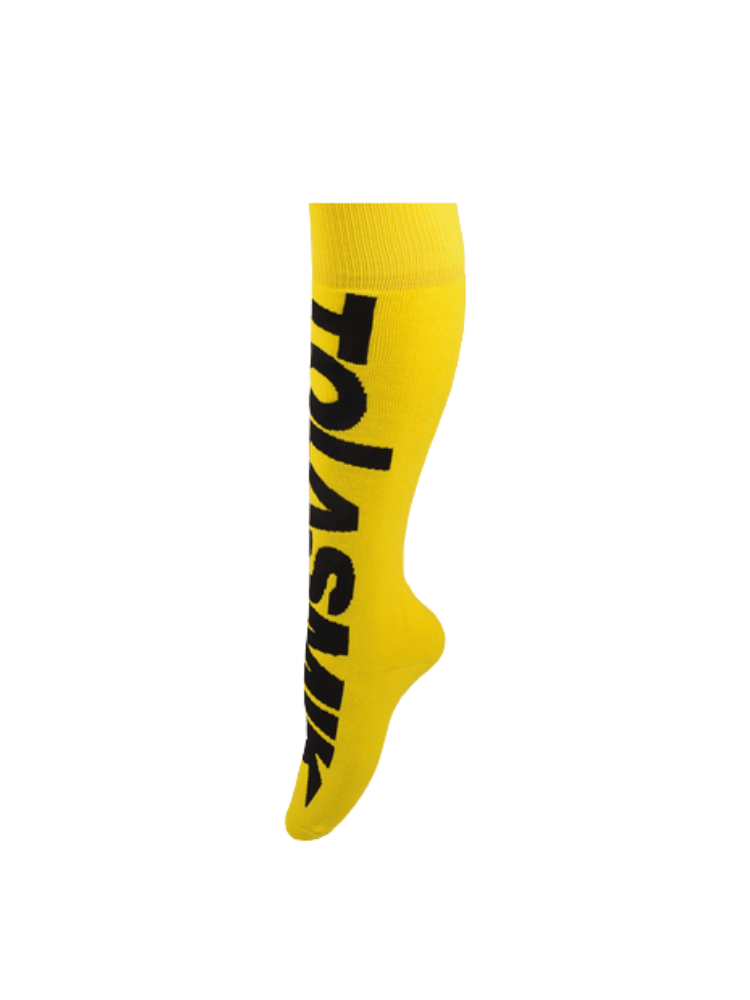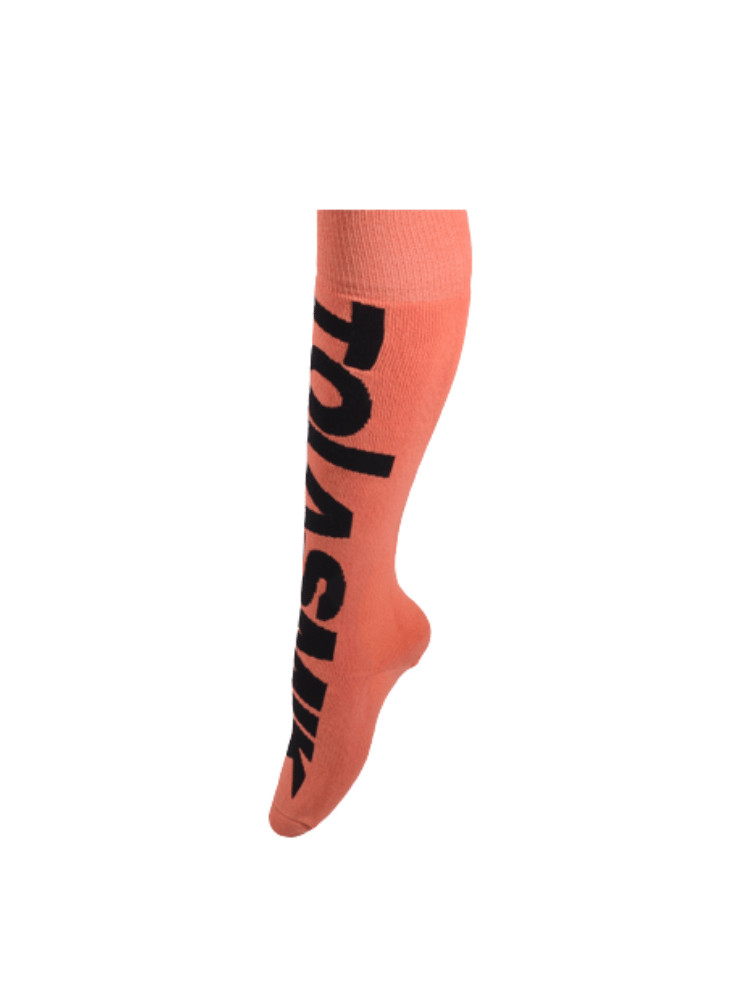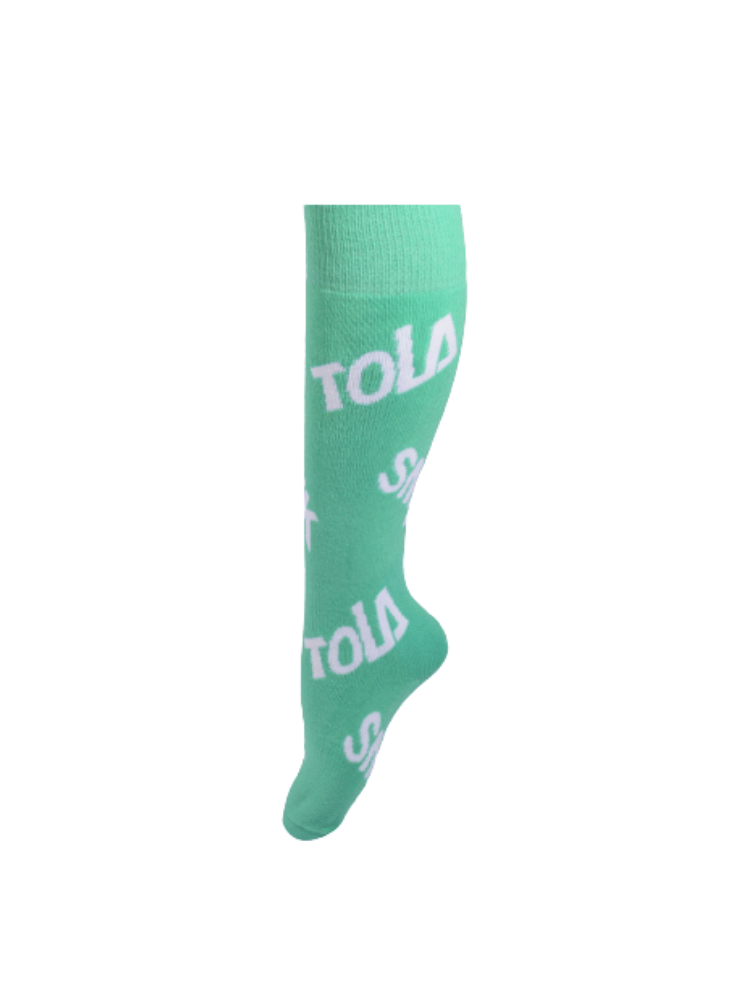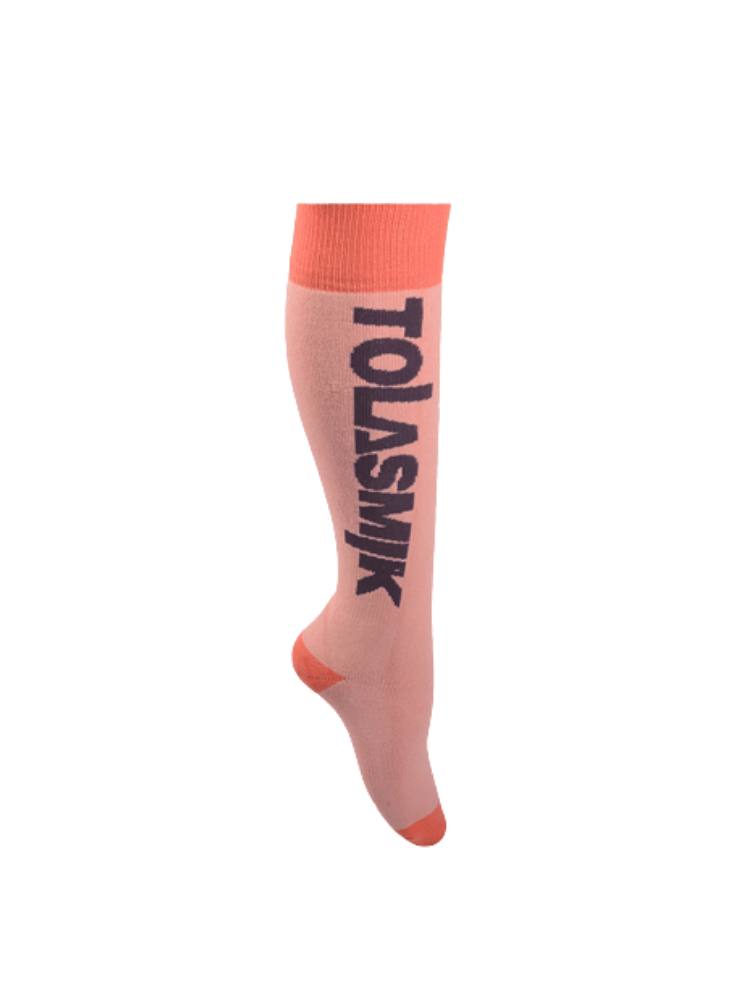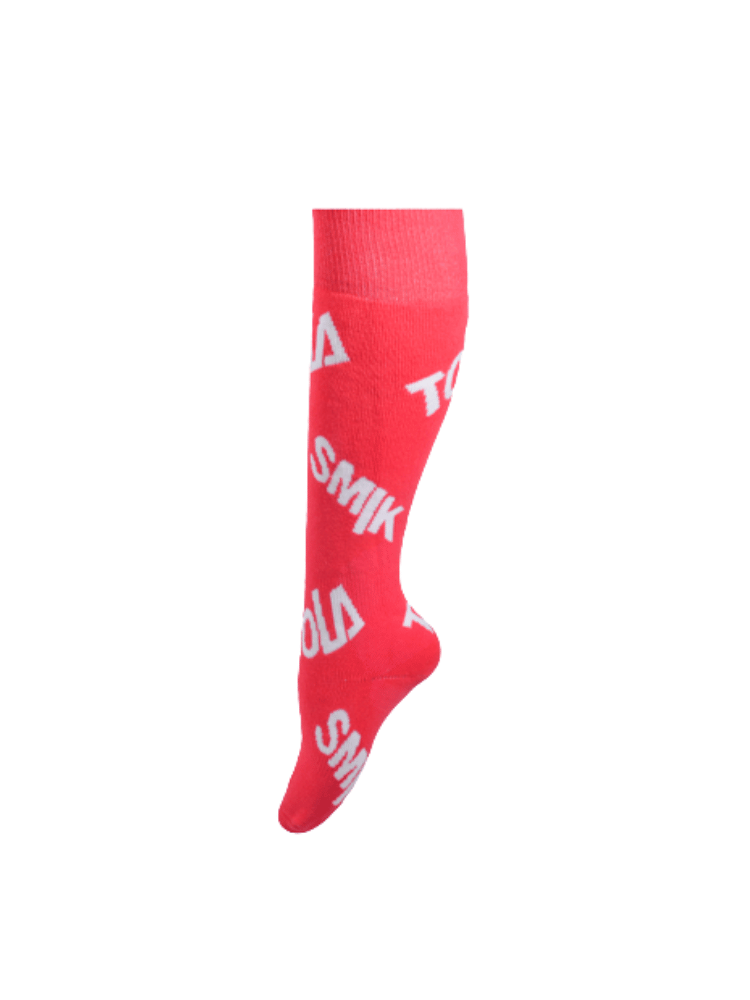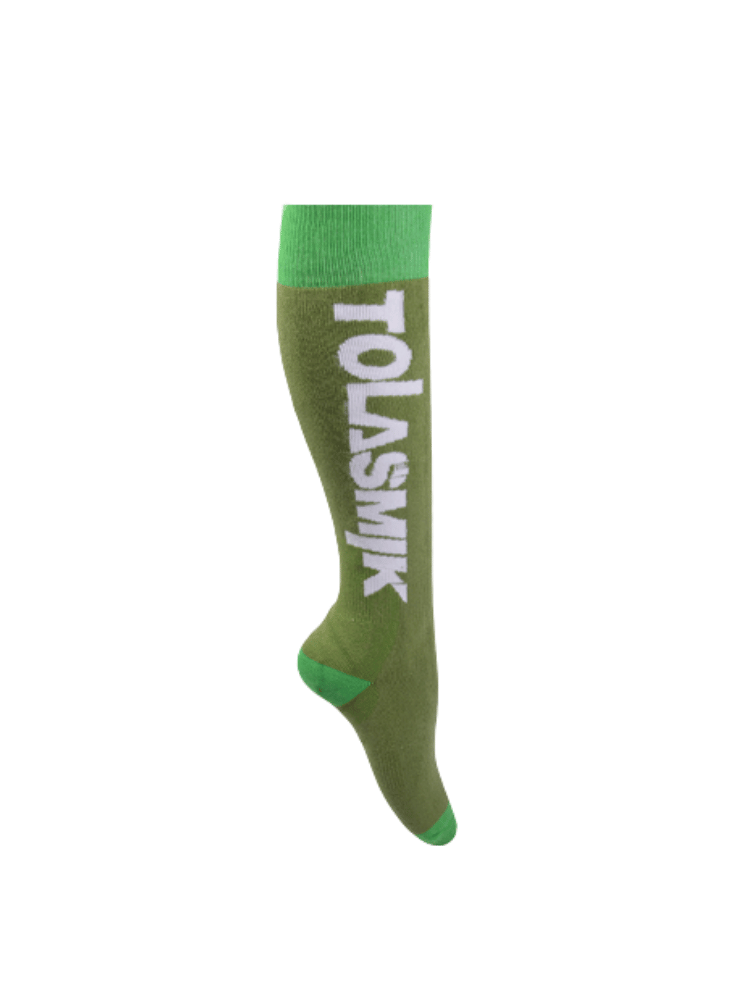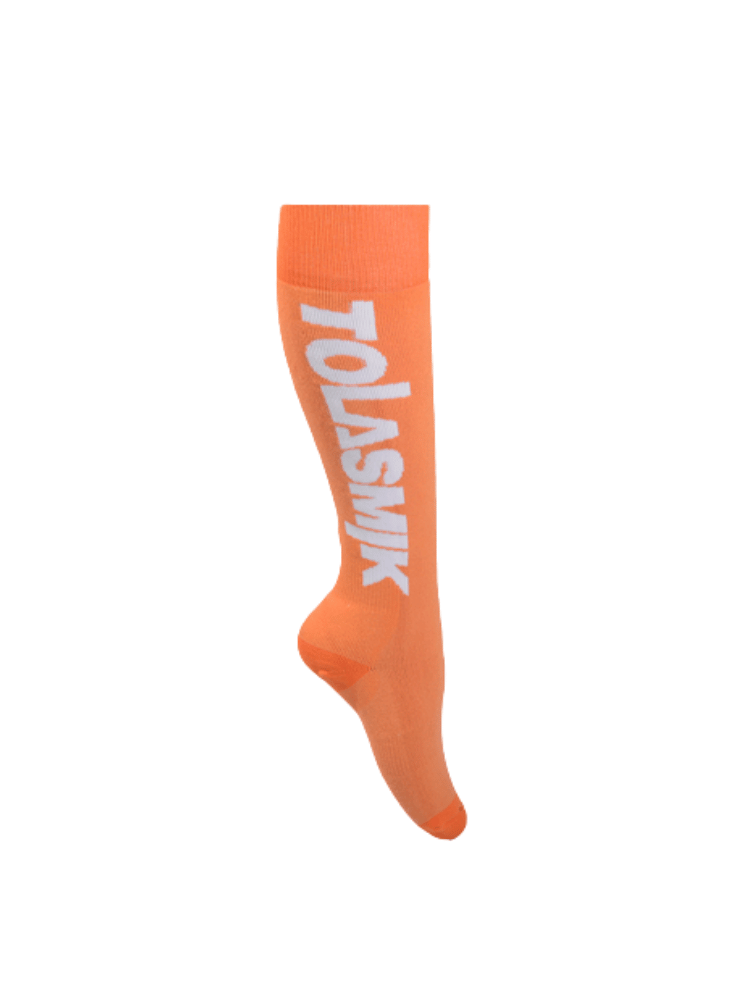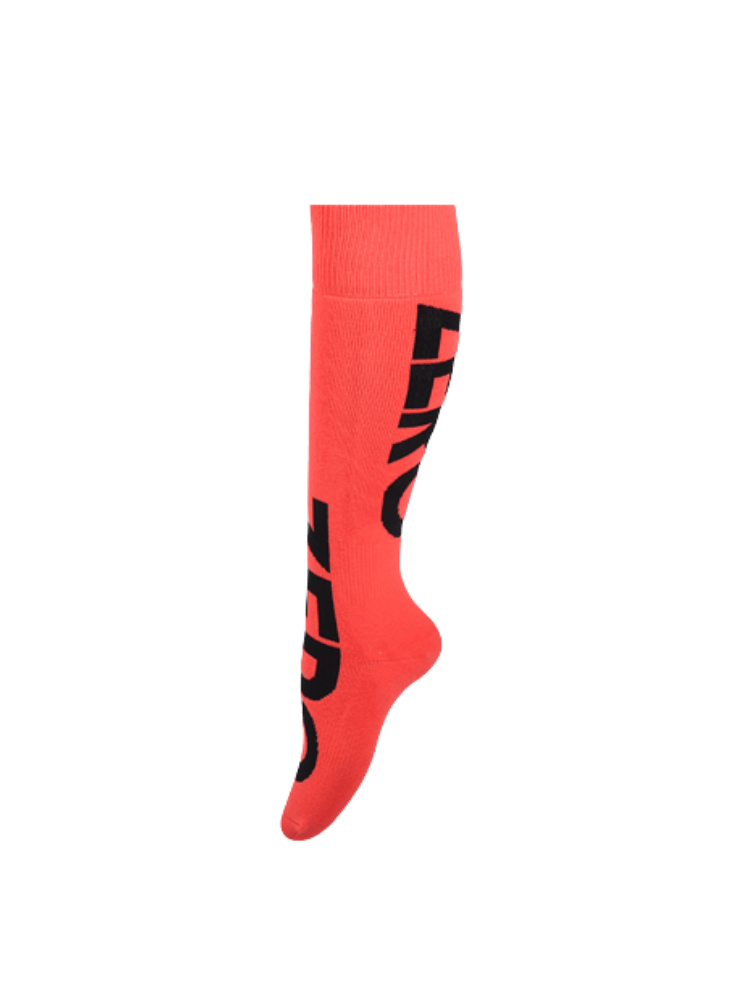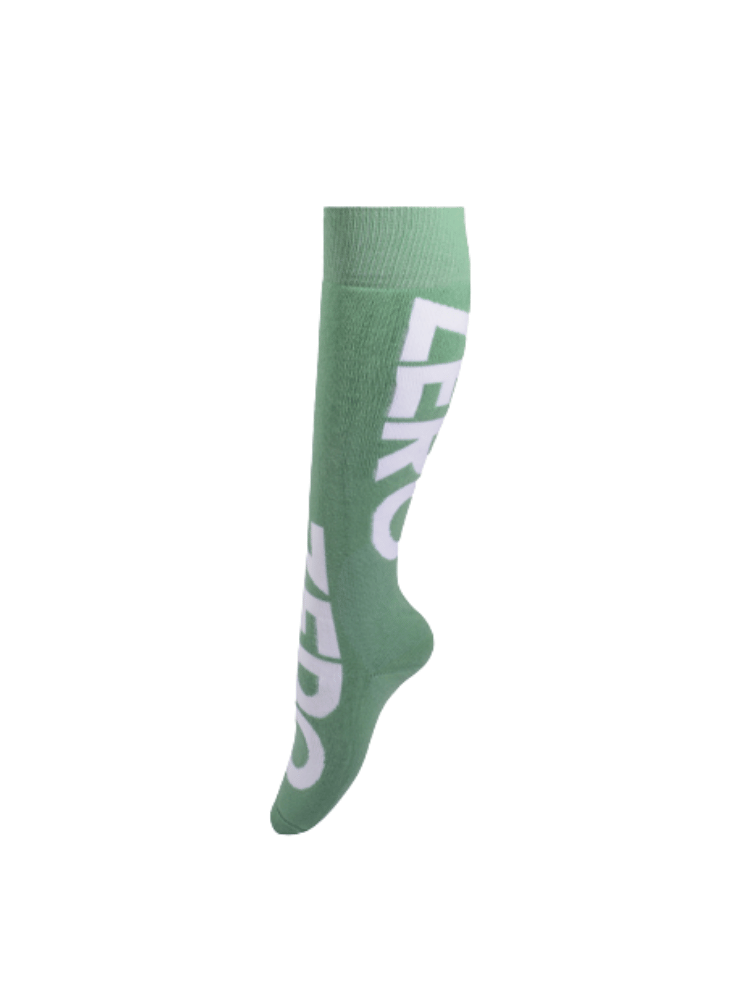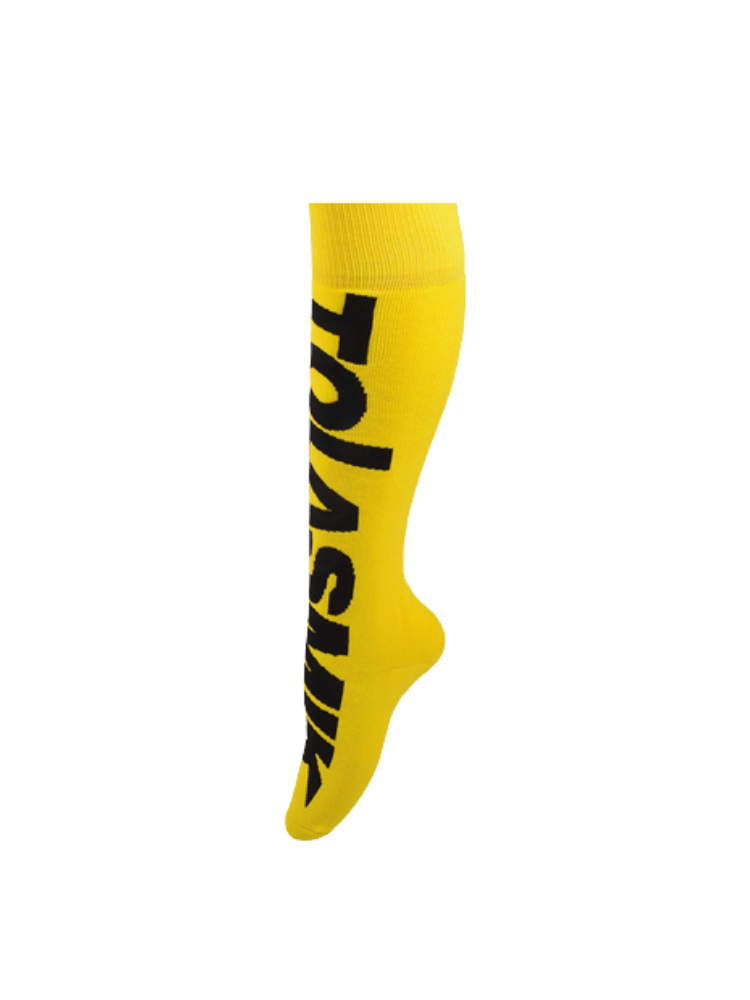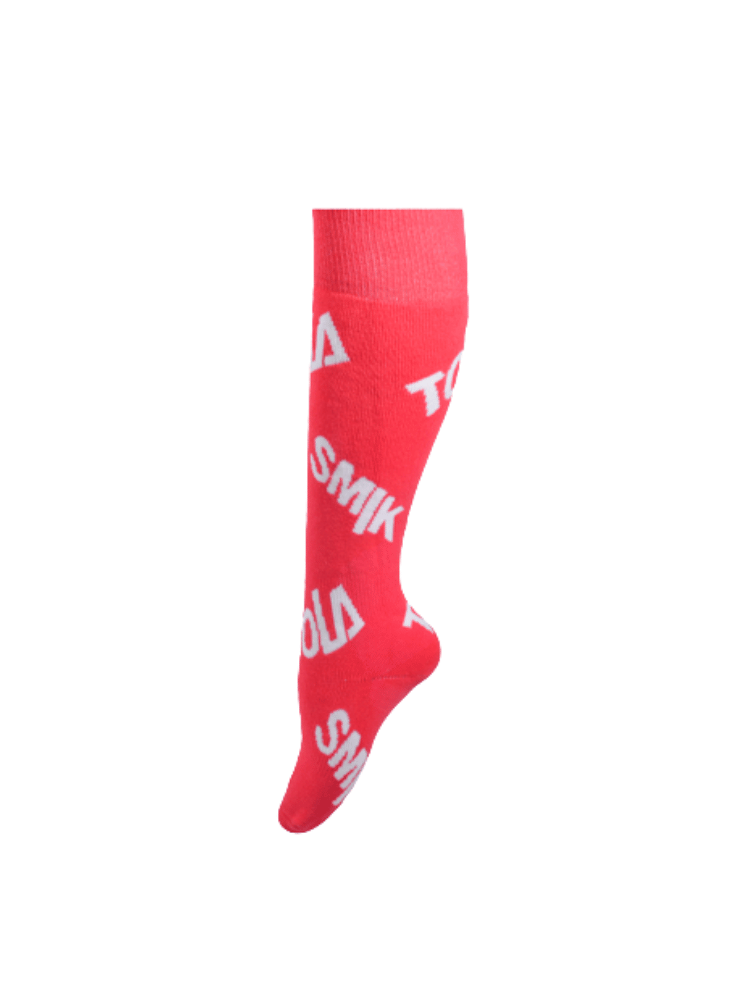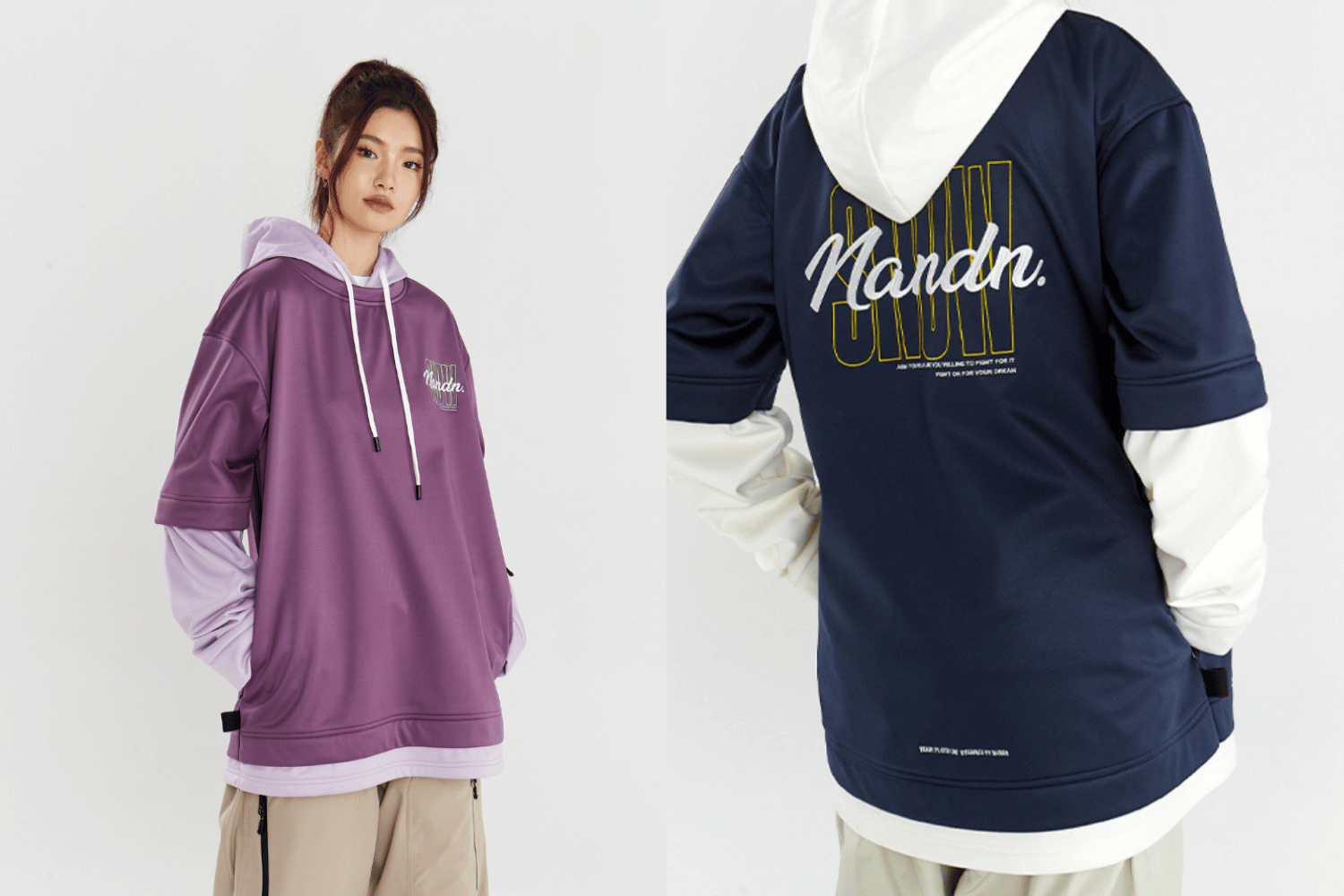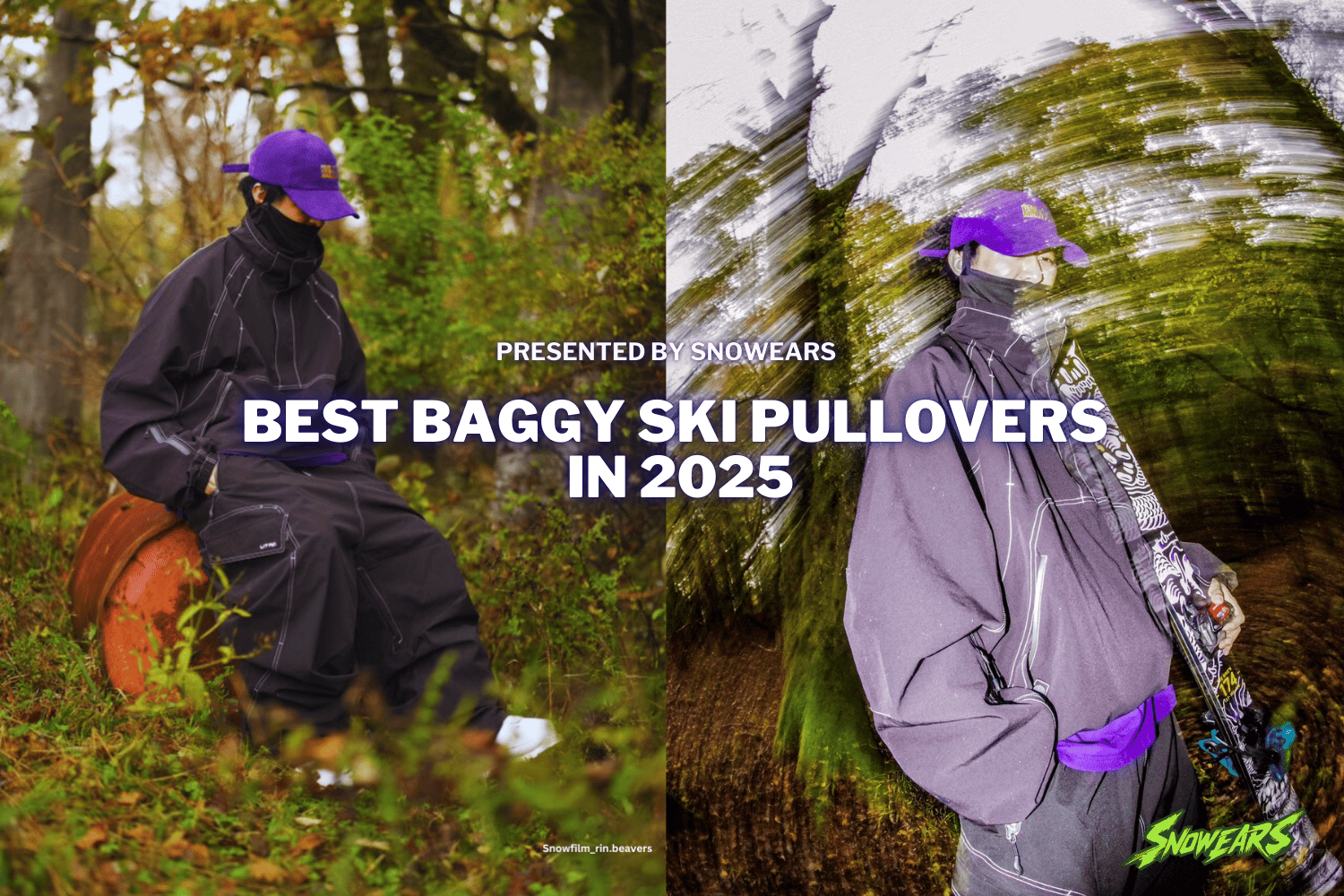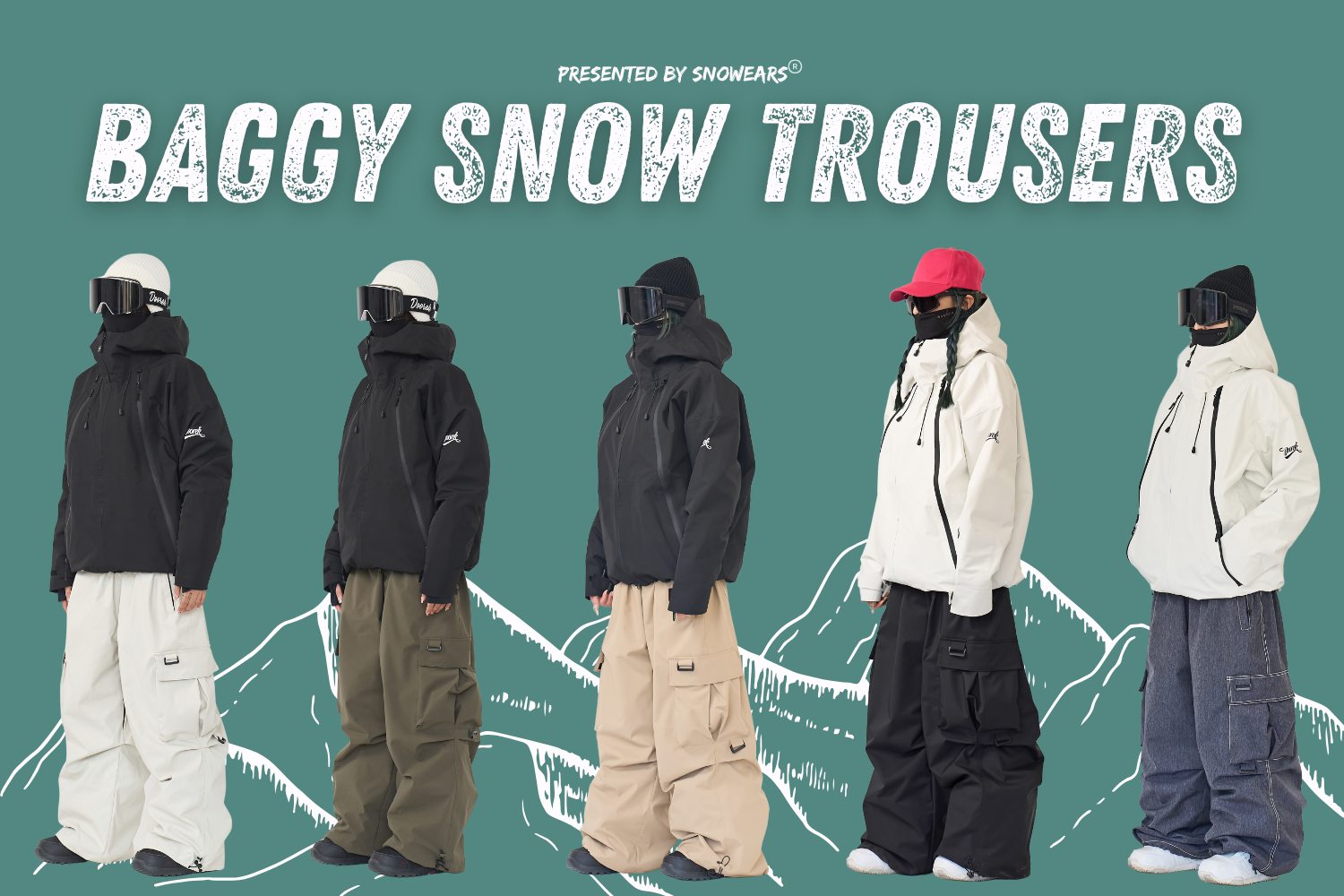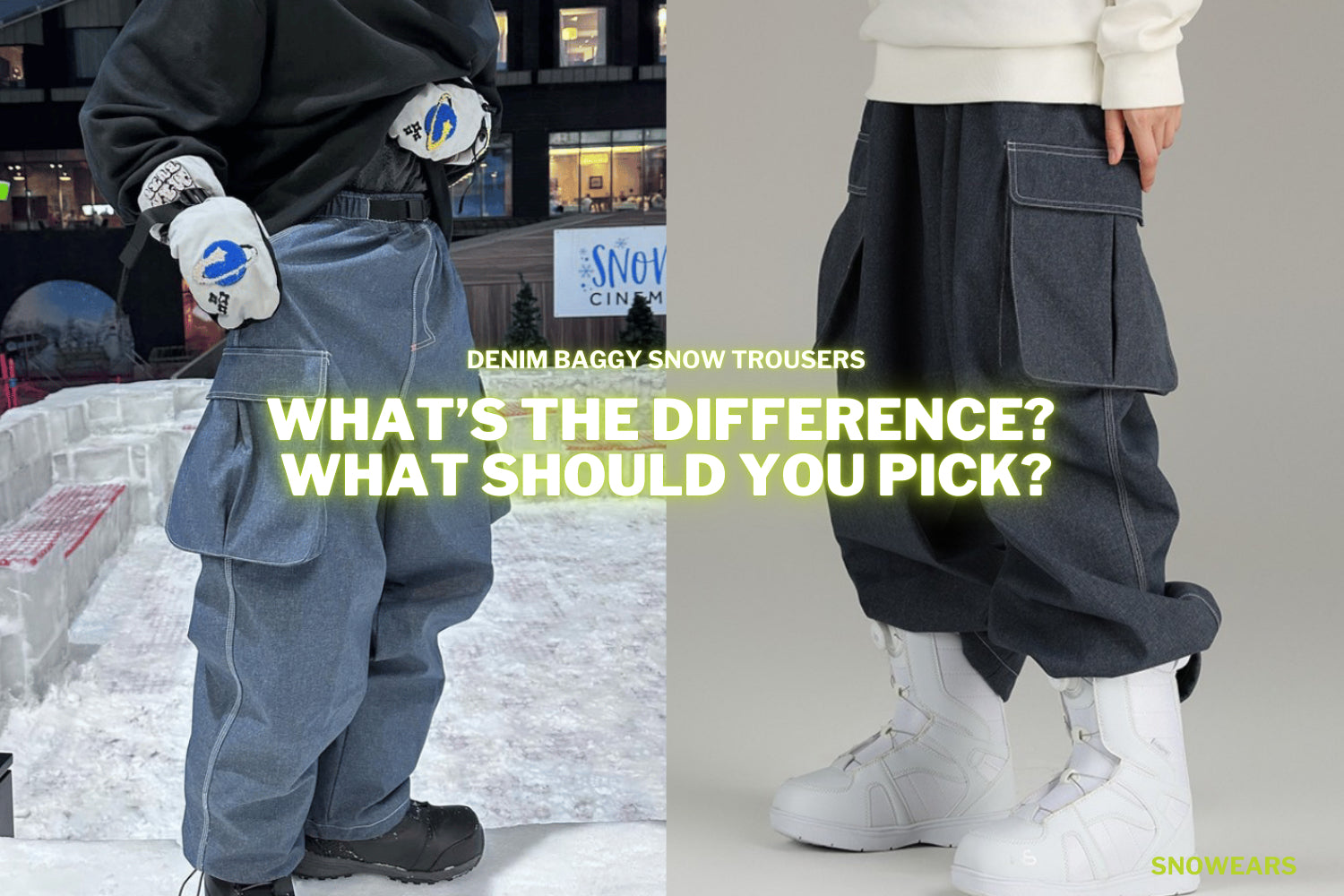Best Ski Socks 2025: Top Picks for Warmth & Comfort
Cecilia Wong
August 20, 2025
Best Ski Socks of 2025 | Snowears
Pre-intro
I tested 5 products and found NNANDN Woolen Knee‑High Ski Socks to be the best overall ski socks.
Intro
I’ve tested ski socks on bone-cold chairlifts, sweaty spring tours, and full-send resort laps—because if your feet aren’t happy, the day’s a bust. I don’t just write gear roundups. I live in them.
My top pick for 2025? The NNANDN Woolen Knee‑High Ski Socks from Snowears. These feel downright engineered for long days on snow. They mix wool warmth, reinforced cushioning, mesh breathability, arch support, and gradual calf compression into one comfy package. I skied all day in mixed conditions, and my feet stayed warm, dry, and blister‑free—no itch or awkward fit—just pure comfort.
That said, “best ski sock” depends on what you do and how you ride. Racing in deep cold? You’ll lean toward maximum insulation. Touring light and fast? You’ll want minimal padding and fast‑drying breathability. Wide calves, narrow feet, or foot sensitivity? Seamless stretch or gentle support might be your pick.
Over the next sections, I’ll break down the best socks for ultra‑cold zones, backcountry tours, snug boot fits, and everything in between—all based on real use and gear science. Whether you’re chasing powder, avoiding blisters, or wrestling with sweaty toes, there’s an ideal sock waiting.
Stick around and you’ll see why each option earns its place.
- Introduction
- Best Overall Product
- Best Budget Product
- Best Ultralight
- Best Durability
- Best Compression
- What To Consider When Buying Ski Socks?
- Sock Thickness, Cushioning, and Warmth
- Conclusion
Table of Content
#1 - Best Overall Product
NANDN Woolen Knee-High Ski Socks
The NANDN Woolen Knee-High Ski Socks are engineered for skiers who demand warmth, support, and dry comfort from first chair to après. Featuring a performance wool blend, targeted compression, and reinforced padding where it counts, these socks offer the rare combo of cushioned comfort and moisture control, without bunching or slipping.
Whether you're skiing bell to bell or hiking bootpacks, they stay put and stay warm. What sets them apart is their ability to balance thermal insulation with breathability. Your feet stay toasty, but not swampy.
The compression offers gentle support without strangling your calves, and the build quality feels like it’ll last way past one season of hard riding.
Pros
- Warm, breathable wool blend ideal for resort or light touring
- Calf-to-arch compression supports muscles and improves fit
- Cushioned zones reduce pressure and friction in ski boots
- Moisture-wicking and odor-resistant for long-use comfort
Cons
- May feel snug for skiers with wide calves
- Not as thin as some race-day socks
Detailed review
Ski socks are one of those things you forget about—until they suck. The. NANDN Woolen Knee-Highs don’t. These felt dialed from the moment I pulled them on. The toe and heel cushioning lands right where it should, and the arch compression hugs without pinching. After a full day on snow, they were still dry, still warm, and didn’t reek.
Wool-rich warmth with smart compression zones—ideal for cold laps and all-day ski missions.
Score: 4.8/5
They ride that sweet spot: warm enough for storm days, breathable enough for spring laps. And because the fit is anatomical (not tube-sock sloppy), they don’t shift around inside your boots. If your current socks are thinning out, riding down, or just not cutting it anymore, these are a serious upgrade.
Sure, they’re thicker than ultralight race socks. But for most skiers, that extra padding means less fatigue, fewer blisters, and way happier feet by day’s end. These are socks you forget you’re wearing… in the best possible way.
#2 - Best Budget Product
NANDN High-Performance Women’s Wool Ski Socks
The NANDN High-Performance Women’s Wool Ski Socks are a solid pick for skiers who value warmth, fit, and durability without shelling out $40+ for a single pair. With a cozy wool blend, reinforced wear zones, and a snug-but-not-suffocating fit, these socks check the boxes for both casual riders and daily grinders. Whether you're lapping blues with the fam or carving storm runs solo, they deliver.
Despite the price, they don’t cut corners. The padding is strategic—thick enough to protect, thin enough to avoid bulk. They wick moisture well, hold up to repeated washes, and don’t sag after a full day in ski boots.
Pros
- Warm and breathable wool blend that performs in frigid temps
- Comfortable fit that stays in place without bunching
- Reinforced durability for multiple seasons of use
- Budget-friendly for high-quality construction
Cons
- Slightly less compression than premium performance socks
- May not suit ultra-narrow boots or high-volume calves
Detailed review
The best gear often blends performance with practicality, and that’s exactly where these. High Performance Women's Wool Ski Socks. land. They’re warm enough for sub-zero chairlift days, yet breathable enough for spring groomers. The wool blend pulls sweat away without that soggy-cotton feeling, and the fit hugs your feet like it means it.
They’ve got just enough padding in high-pressure zones to ease boot fatigue, but they never feel bulky. For skiers who ride a lot but don’t want to replace socks every season, the reinforced heel and toe help them go the distance. I machine-washed mine multiple times—no shrinkage, no weird twisting.
Reliable warmth and performance that won’t break the bank—ideal for cold days and comfort-focused skiers.
Score: 4.7/5
They're not hyper-specialized racing socks, and they don’t have aggressive compression. But for 90% of skiers, especially those who just want their feet warm and comfortable without paying a premium for the logo, these are a steal.
#3 - Best Ultralight
NANDN High-Performance Wool Ski Socks
The NANDN High-Performance Wool Ski Socks strike a rare balance: warm enough for cold chairlifts, light enough for high-output laps. Designed for skiers who move fast and ride hard, they deliver targeted insulation without the sweaty feet or soggy heels. Think of them as your go-to sock for big vert days, daily resort missions, and everything in between.
Thanks to a lean profile and breathable wool blend, they layer seamlessly in tight boots and dry quickly after long sessions. There’s just enough cushion underfoot for impact absorption, without compromising feel or fit.
Pros
- Lightweight warmth that works across temps and terrain
- Stays snug without slipping or bunching
- Breathable construction keeps moisture under control
- Reinforced zones improve longevity for daily use
Cons
- Less padding than heavyweight socks—may not suit ultra-cold or stationary days
- Minimal compression; less support than premium race socks
Detailed review
The NANDN High-Performance Wool Ski Socks are the kind of socks that disappear—in the best way. No sagging. No weird bunching. No “are-my-toes-still-there?” moments. The wool blend traps heat close to the skin while letting excess moisture escape, keeping your feet dry and warm even when the laps stack up.
They’re especially great for skiers who hate thick socks or prefer a closer boot fit. The lightweight feel translates into better control, less fatigue, and more comfort as the day wears on.
Reinforced heel and toe zones mean they won’t shred after five washes, and they still come out of the laundry drawer feeling like new.
Ultralight, warm, and built for movement—these are daily drivers for skiers who want warmth without the bulk.
Score: 4.7/5
Not the thickest socks in the drawer, sure—but for skiers who’d rather move fast than overheat, these strike gold. Whether you're lapping groomers or breaking trail, they’ll keep your feet happy, lap after lap.
#4 - Best Durability
NANDN Ski Socks
The NANDN Ski Socks are built to handle whatever the mountain throws your way. With a design focused on longevity, comfort, and performance, they’re ideal for skiers who ride hard, ride often, and don’t want to think about their feet halfway through the day.
The wool blend offers solid insulation without feeling bulky, while reinforced stress zones keep it from breaking down after just a few wash cycles.
Whether you’re threading trees, carving groomers, or bootpacking into the goods, they hold up—and stay put.
Pros
- Durable construction that holds shape and cushioning over time
- Comfortable fit with zero sagging or heel creep
- Solid warmth without the overheating
- All-mountain versatility from cold mornings to soft afternoons
Cons
- Not as thin as race-specific socks—may feel snug in ultra-tight boots
- Limited color options for those who like to match their kit
Detailed review
If your current socks start thinning out after a handful of rides, you’ll notice the difference here. These NANDN ski socks are made with durability in mind, from the toe box to the calf cuff.
They’re padded where it matters, snug where you want support, and flexible enough to keep you moving without hotspots or pinch points.
Rugged, reliable, and built for repeat laps—these socks are all-mountain workhorses that thrive in tough conditions.
Score: 4.7/5
The fit stays locked in whether you're cruising corduroy or hammering through chopped-up powder. No bunching, no sliding down, and no pressure points, even after hours in the boots. Bonus: they bounce back nicely in the wash.
Not built for minimalist racers or skiers who prefer paper-thin insulation, but for just about everyone else, especially riders who want gear they can trust day after day, these are a win.
If you're the kind of skier who goes hard from first chair to last call, your feet deserve these.
#5 - Best Compression
Tolasmik Powder Pals Socks
The TOLASMIK Powder Pals Socks blend playful design with smart compression tech, offering just the right balance of support, breathability, and comfort for full days on snow. These aren't just cozy—they actively work to reduce leg fatigue while staying soft, stretchy, and surprisingly durable.
With a one-size-fits-all design, they slide on easily and hug the calf without cutting circulation. Whether you're charging hard, coaching on-hill, or chasing après from the lodge to the bar, these socks keep pace—no bunching, no slipping, no sore arches.
Pros
- Graduated compression helps reduce fatigue and boost circulation
- Comfortable fit with no hotspots or heel slippage
- Soft but sturdy knit holds up to heavy use
- Colorful design that adds personality to your kit
Cons
- Not wool-based, so warmth may be limited in deep-freeze conditions
- A compression fit may not appeal to skiers who prefer looser socks
Detailed review
The TOLASMIK Powder Pals Socks are a solid upgrade for skiers who want a bit more than just warmth. The standout feature here is graduated compression, which keeps circulation flowing and muscles engaged, especially noticeable on long bootpacks, bump laps, or back-to-back resort days.Despite the snug fit, they don’t feel restrictive.
The weave flexes with your stride, and the padded zones reduce pressure from stiff boots without getting swampy. While they’re not thick wool heaters, they regulate temperature well for most winter conditions and dry out quickly after use.
All-day energy and snug support in a fun-loving package—ideal for active skiers who want comfort with a performance edge.
Score: 4.6/5
The aesthetic’s fun without being gimmicky, and the all-in-one sizing simplifies your drawer. If you’re the kind of skier who stays out from first tracks to last lift—and wants your legs to feel fresh doing it—Powder Pals are a smart, supportive pick.
What To Consider When Buying Ski Socks?
Ski socks might seem like a minor detail—until your toes go numb halfway through your first chairlift. With so many options out there (merino, synthetic, ultralight, heated...), it can be hard to know which pair is worth the space in your boot bag.
That’s where our testing process comes in. While nothing beats trying a few pairs yourself, we’ve put each sock in this guide through real-world wear, from deep powder to icy groomers, resort laps to uphill missions. We evaluate comfort, warmth, breathability, fit, and long-term durability, with input from skiers and snowboarders of all levels.
So if you’re feeling overwhelmed by all the tech talk—RWS wool, seamless toes, strategic cushioning—we’ve done the legwork to help you narrow it down.
Whether you're shopping for everyday resort use or deep-winter adventures, this guide will help point you toward the socks that deliver.
Sock Materials

Merino Wool
Merino’s price tag isn’t modest, but for serious skiers, it’s worth every penny. Why? Because it nails the essentials: next-to-skin softness, odor control, and the kind of thermoregulation that keeps your feet warm in January and cool in April. If you’re after a sock that can do it all—comfort, performance, and multi-season versatility—this is your go-to.
Of course, most “merino” socks aren’t 100% merino. To deliver the right mix of structure and stretch, brands blend in synthetics like nylon for durability and elastane for flex. Weave density also plays a role—Darn Tough leans on a tighter, tougher knit for long-term wear, while others like Icebreaker favor plush comfort at the expense of a bit of lifespan.
Synthetic Options
While merino dominates most top-tier picks, synthetics offer a solid budget-friendly option. These socks typically prioritize a close, athletic fit and moisture-wicking over insulation.
And while no sock can fix the breathability limits of a plastic shell boot, synthetics do their best to keep your feet dry. Warmth and odor control are their weak points.
Nylon’s Role
Nylon isn’t a headline feature, but it’s essential. It reinforces structure, prevents sagging, and helps maintain a sock’s shape over time, especially when blended with spandex or elastane.
You’ll see nylon content anywhere from 15% to 50% across the best ski socks, and in general, more nylon = more precision fit. It’s not glamorous, but it’s what keeps your socks from slipping or bunching mid-run.
Sock Thickness, Cushioning, and Warmth

Ultralight
It may sound counterintuitive, but ultralight socks can hold their own in cold temps, so long as your boots are modern and well-fitted. Today’s high-performance liners use heat-trapping tech like Thinsulate to keep your feet warm without bulk. The closer fit of an ultralight sock also improves boot feel and power transfer, making it a top pick for technical skiing and fast laps.
Our top ultralight choice is the NANDN High-Performance Wool Ski Sock. It’s breathable, supportive, and built for precision-fit boots. Just don’t wear them out of your boots—they’re thin and won’t stand up to post-ski lounging. For warmth or plushness, consider stepping up to lightweight.
Lightweight
Lightweight socks hit the sweet spot: thin enough for a snug fit in modern ski boots, but cushioned enough to keep pressure points at bay. For most skiers—especially resort riders—this is the most versatile option. If you usually wear ultralights, a lightweight sock can be a welcome upgrade for colder days or longer outings.
We recommend the NANDN Ski Sock. It offers a great blend of warmth, odor resistance, and ergonomic cushioning, without compromising performance. Lightweight socks are ideal for skiers who want just a touch more protection and comfort, without the bulk.
Midweight
Thicker socks used to be the norm, but boot insulation has come a long way. Still, if you tend to run cold or have older, worn-out liners, a midweight sock could provide the extra warmth and cushioning you need.
Just beware: too much bulk can backfire by cutting off circulation. Midweights only work well when your fit is roomy enough to handle the extra volume without pressure points.
Shin Padding
If you ski hard—or just ski often—some level of shin padding is a must. It softens the blow during jump landings, helps prevent shin-bang, and makes a full day in stiff boots a lot more bearable. Whether you're carving groomers or charging backcountry lines, extra cushioning up front goes a long way.

Most ski-specific socks that offer decent underfoot padding also build in some shin protection. It’s especially valuable on firmer snow, where you tend to lean forward more. While there are ultralight socks that manage to add shin support without extra bulk, they’re rare.
And one small caveat: skip snowboard-specific or crossover socks if shin comfort is a priority—many of those skip padding in that zone entirely.
Moisture-Wicking Properties
Wicking isn’t just a buzzword—it’s the difference between a dry, warm foot and a soggy, frozen one. Ski socks need to move moisture fast, especially if you're touring, lapping powder, or just someone who runs warm. That’s where merino wool stands out.

It pulls sweat away from your skin and keeps insulating even when damp. Synthetic blends dry quickly, too, but they don’t hold moisture as well, and after a long day, they’re more likely to smell like it. Prioritize breathability if your boots or conditions run hot.
Compression Socks
Compression socks have made their way from marathoners to mountain-goers—and for good reason. The snug fit is designed to improve blood circulation, which could mean warmer feet and less muscle fatigue during long days on the hill.

While the warmth benefits are hard to quantify, what’s more certain is the locked-in, bunch-free fit. For performance-focused skiers who prioritize precision and support, compression models deliver a tight, glove-like feel that won’t slip, sag, or bunch—no matter how aggressive your line gets.
Fit and Sizing
When it comes to ski socks, fit isn’t just a comfort issue—it’s a performance one. A good pair should hug your foot, ankle, and shin without feeling restrictive.

Extra fabric? That’s a fast track to blisters and hot spots. You want zero bunching, zero shifting, and a sock that stays locked in through every turn. Compression socks are an exception, but in general, you shouldn’t have to wrestle them off. If you’re between sizes, go smaller for a snug, no-slip fit.
Ski Sock Height
Ski socks should come up to just below the knee—anything shorter risks rubbing against your boot cuff, and that’s a recipe for raw skin.

Ski boots are tall by design, so your socks need to match that height to avoid gaps or pressure points. A little extra coverage goes a long way in keeping things comfortable. It’s also why casual or hiking socks usually don’t cut it. Stick with ski-specific designs—they’re made to handle the fit, friction, and flex of a proper day on snow.
Women’s, Men’s & Unisex Ski Socks
While many ski socks are unisex, some brands offer women-specific fits with subtle tweaks, usually a slightly shorter cuff or narrower shape.

For instance, a men's over-the-calf model might run an inch longer than the women's version. That difference isn’t just cosmetic—it’s meant to dial in comfort based on average leg proportions. That said, there’s no hard rule. Plenty of skiers find the best fit by ignoring the label and going with what hugs their calves just right. In the end, comfort always beats categories.
Sustainability
The ski sock space is catching up to the rest of the outdoor industry when it comes to eco-minded design. Recycled nylon is becoming more common in premium models, and certifications like the Responsible Wool Standard (RWS) are starting to appear, ensuring humane animal treatment and responsible land use.

Ski Socks vs. Snowboard Socks
While the picks above are dialled for skiers, snowboarders will want to pay attention to a few key differences.

Snowboard boots tend to be roomier, so snowboard-specific socks usually come in thicker, midweight builds to fill space and offer cushion. Padding is also redistributed—expect more across the top of the foot rather than up the shin. It’s all about matching the sock to your boot type and riding style.
Durability and Care
Ski socks prioritize performance over toughness, so even premium models can wear thin with time. Most use fine-gauge knits and lightweight merino-nylon blends for a snug boot fit, but those same materials can be prone to holes after heavy use.

Our advice: treat them well. Turn socks inside out, wash on cool, and skip the dryer (line-drying helps reduce pilling). If you ride hard, consider pairs with solid warranties—Darn Tough’s lifetime guarantee is a standout, while brands like Icebreaker offer satisfaction-backed peace of mind, no questions asked.
People Also Read
Conclusion
After weeks of real-world testing—from icy whiteouts to bluebird spring laps—our top pick for 2025 is the NNANDN Woolen Knee‑High Ski Socks. They struck the best balance of warmth, fit, and durability, with zero bunching inside our boots and consistent comfort throughout the day. The blend of natural and technical fibres nailed it on both moisture management and insulation—two areas where many socks fall short.
If you’re investing in gear that keeps you out longer and skiing stronger, quality socks are worth every penny.
FAQs
Have Any Questions?
We are here to answer all of your queries
























